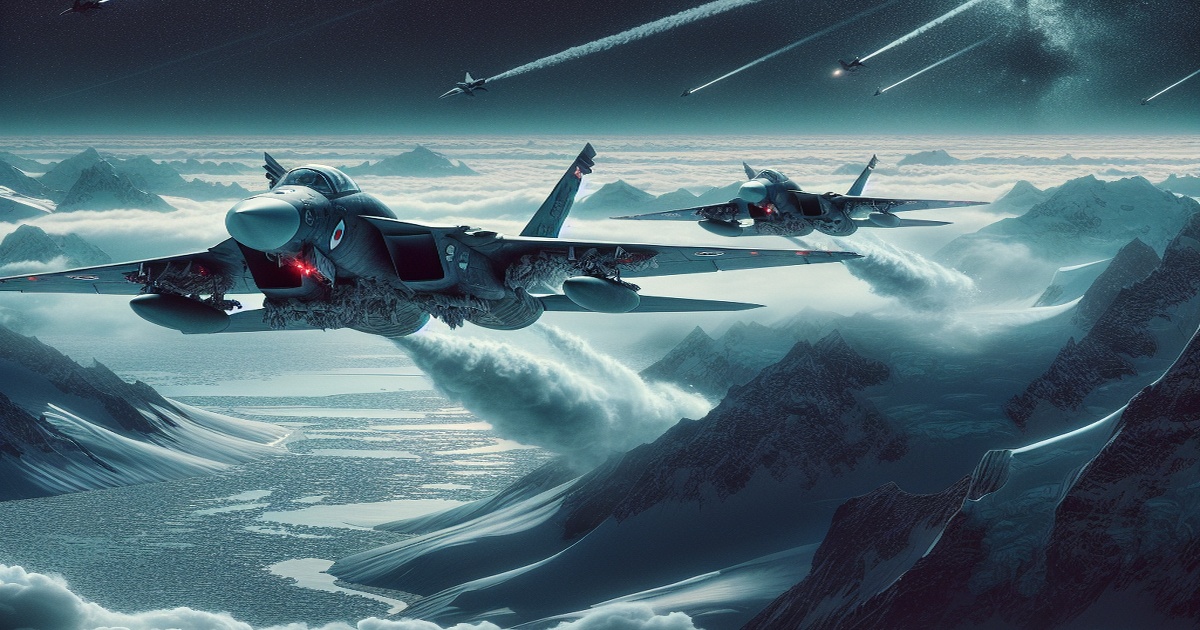This week, the North American Aerospace Defense Command (NORAD) announced that it had scrambled a combat air patrol of American and Canadian fighter jets after detecting multiple Russian warplanes in the Arctic. Though the Russian aircraft were flying in international airspace and did not pose an immediate threat, NORAD took precautionary measures by sending eight military planes to observe their activity, which included Canadian CF-18s and U.S. F-35s, accompanied by refueling aircraft.
Later, NORAD indicated that additional F-16 fighter jets were dispatched from Alaska to further establish a military presence in the Arctic, emphasizing that this decision was not in response to any current threats. These deployments occurred shortly after a similar incident in which NORAD aircraft shadowed Russian warplanes flying near Alaska, underscoring the heightened attention on the Arctic region amid increasing military scrutiny.
The Arctic has emerged as a critical geopolitical area, with the U.S., Russia, and China all intensifying their military focuses there. The U.S. maintains its northernmost military base in Greenland, which has been the subject of interest, especially following President Trump's expressed desire to acquire the territory. However, Greenland's officials have firmly asserted that its sovereignty is not for sale, despite the strategic significance of its location.
Russia's military activities in the Arctic have expanded, as evidenced by President Putin's unveiling of two nuclear submarines and recent hypersonic missile tests. Amanda Dory, acting U.S. undersecretary of defense for policy, pointed out the implications of Russia's Arctic military capabilities and their potential risks to U.S. and allied territories.
In the meantime, TASS news agency reported ongoing Russian drills in the Arctic, including a large-scale exercise planned by the Russian Ministry of Emergency Situations later this month. Additionally, it was revealed that a Russian nuclear-powered icebreaker recently incurred hull damage due to a collision in the Kara Sea, occurring under challenging Arctic conditions, although no injuries were reported.
The U.S. has issued warnings to both Russia and China regarding their growing military and economic endeavors in the Arctic. In response, both countries have defended their actions, with China asserting its commitment to cooperation and sustainability, while Russia emphasizes its role in maintaining stability in the region.







7 Comments
KittyKat
It's absurd to see military jets on standby for planes that pose no threat. This is a waste of taxpayer money!
Karamba
We need to consider the long-term consequences of these actions. Are we really protecting our interests or creating more conflicts?
Noir Black
More military presence in the Arctic is definitely warranted. It’s time we stand firm against Russian encroachments!
Eugene Alta
We should be focusing on peace and collaboration, not sending jets to shadow foreign aircraft. This will lead to misunderstandings.
Michelangelo
The Arctic’s strategic importance can’t be underestimated. Following through with these military measures is necessary.
Donatello
I fully support the deployment of fighter jets. Preparedness is crucial for national security, especially in hostile environments.
ArtemK
It’s refreshing to see a proactive defense strategy. Let’s protect our interests while ensuring that international laws are respected.